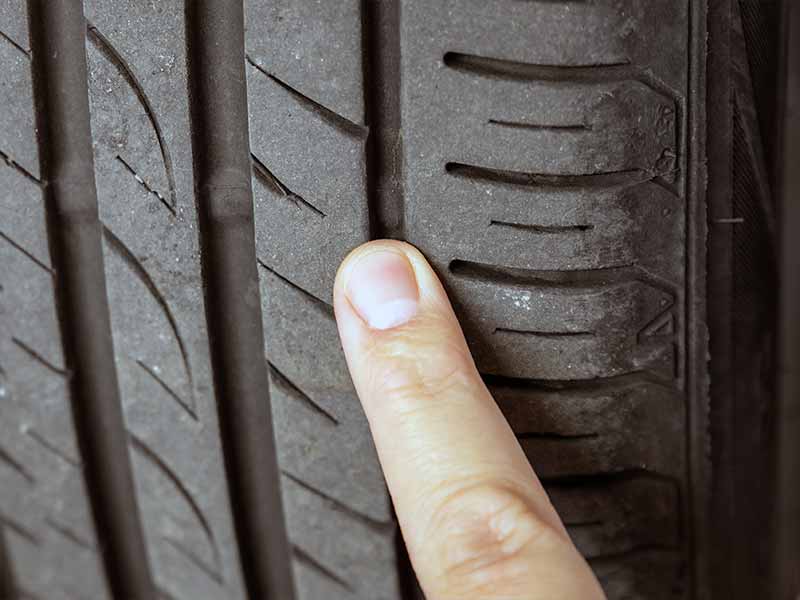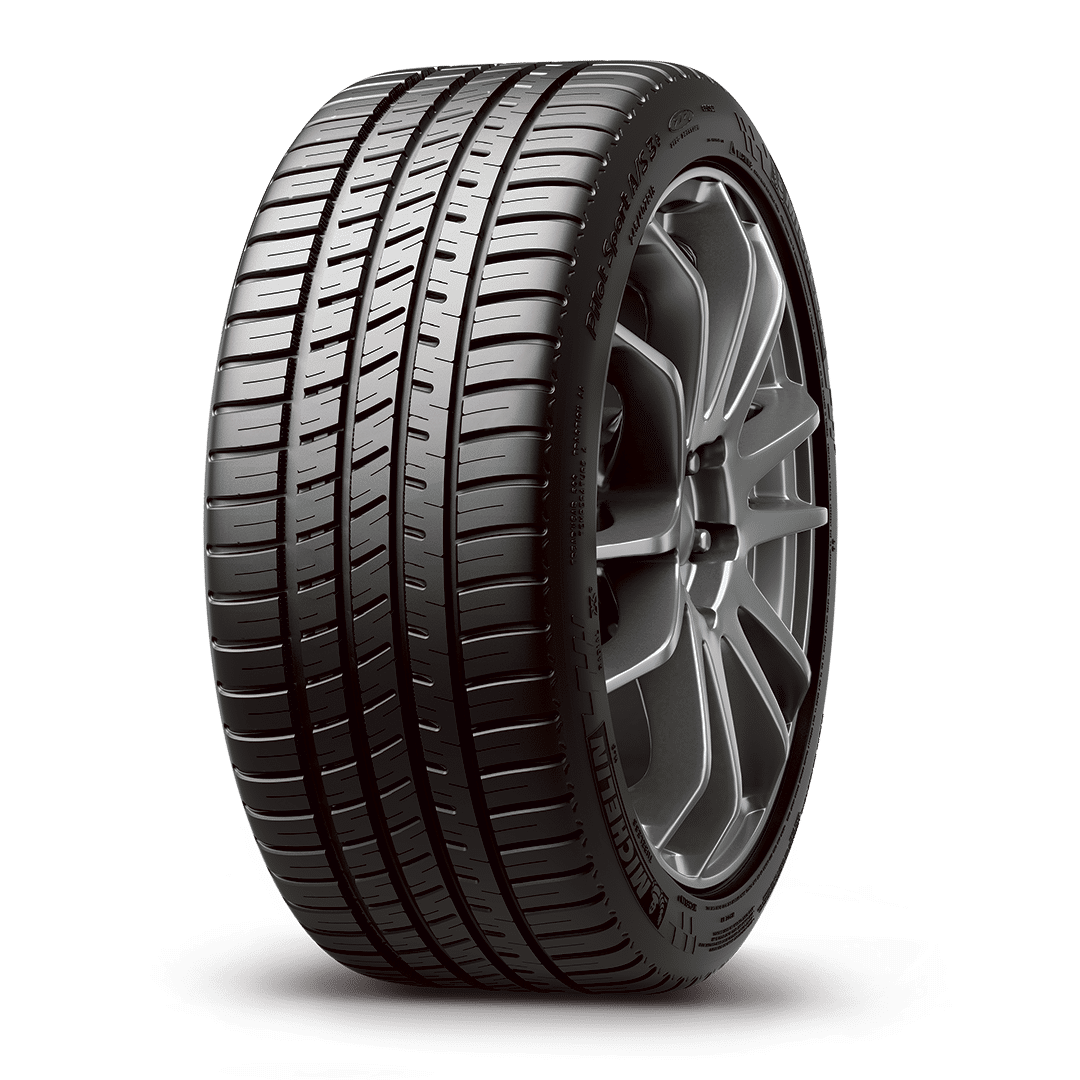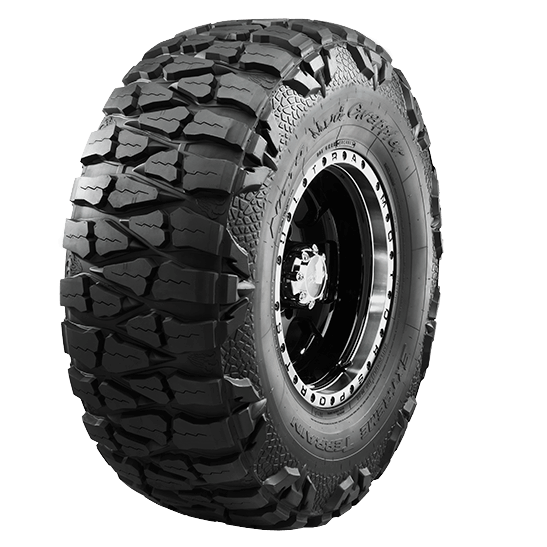When it comes to selecting the right tire for your vehicle, it’s important to consider the type of driving you’ll be doing and the weather conditions you’ll be facing. This is where tire tread types come into play.
Each type of tire tread has its own unique characteristics and benefits, so understanding them can help you make an informed decision.
Tire Tread Types
- Symmetrical
- Directional
- Asymmetrical
- Winter
- All-Terrain
- Mud Terrain
- Highway
In this article, we’ll provide an overview of the different types of tire tread patterns, including symmetrical, directional, asymmetrical, winter, all-terrain, mud terrain, and highway tread patterns.
We’ll explore the defining characteristics of each pattern, their advantages and disadvantages, and provide examples of each to help you make the best choice for your driving needs.
Let’s take a closer look.
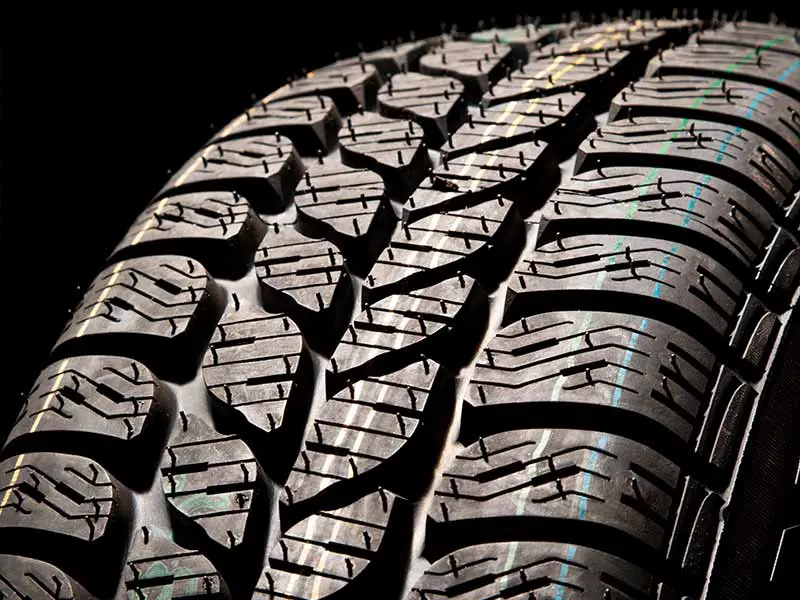
Purpose Of Tire Tread
The purpose of tire tread is to give you grip and traction. The way the tread is designed is what helps push water, slush, and snow out of the way, so your tires can grip the road better. Not only that, but good tread also makes for a smoother ride by soaking up all the bumps and jolts from crappy roads.
Importance Of Tire Tread
Tire tread is the rubber on the outermost layer of the tire that makes contact with the road. It is designed to provide grip and traction on various road surfaces and in different weather conditions.
Without adequate tread, a tire is unable to provide sufficient grip, which can lead to poor handling, longer braking distances, and an increased risk of hydroplaning on wet roads. In addition, tires with worn or damaged treads are more susceptible to punctures and blowouts, which can be dangerous and costly to repair.
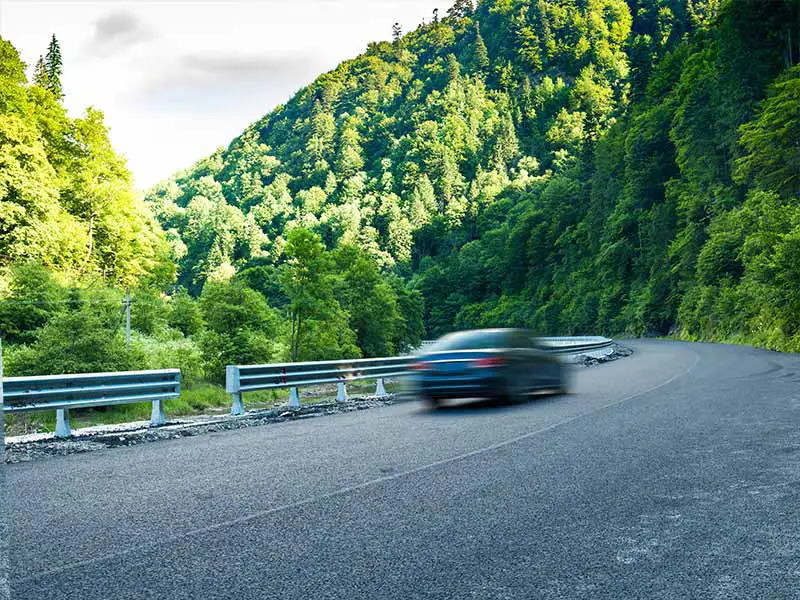
Overview Of Tread Patterns
Tread patterns come in different shapes and sizes, and each serves a specific purpose. Symmetrical tread patterns have a similar design on both sides of the tire, making them easy to rotate and extend their lifespan. However, they’re not ideal for wet and slippery conditions.
Directional tread patterns have a V-shape and point in one direction, providing excellent grip and traction in wet and snowy conditions. They’re also known to reduce hydroplaning and enhance fuel efficiency. However, they’re not suitable for all terrains and weather conditions.
Asymmetrical tread patterns combine the best of both worlds, with a different tread design on each side of the tire. They provide excellent grip in wet and dry conditions, as well as a comfortable and quiet ride. However, they tend to be more expensive than symmetrical and directional tread patterns.
Symmetrical Tread Patterns
If you’re looking for a tire that can handle a wide variety of driving conditions, a symmetrical tread pattern might be the way to go. These tires have a tread design that’s the same on both sides of the tire, making them easy to rotate and providing consistent performance no matter which direction you’re driving in.
Definition
Symmetrical tread pattern is characterized by a tread design that’s the same on both sides of the tire. The pattern usually consists of continuous ribs or blocks that run around the entire circumference of the tire, with smaller grooves in between to help channel water and slush away from the tire’s contact patch.
Characteristics
Symmetrical tread patterns offer a smooth and quiet ride, thanks to their evenly distributed tread blocks. They also tend to wear more evenly than other types of tread patterns, which can help extend the life of the tire. Because they have a balanced design, symmetrical tires can be rotated in any direction without affecting their performance.
Advantages And Disadvantages
One of the biggest advantages of symmetrical tread patterns is their versatility. They’re suitable for a wide range of driving conditions, from dry and hot to wet and slippery. However, they may not provide as much traction as directional or asymmetrical tires in certain conditions. For example, in deep snow or mud, the tire may not be able to dig in as well due to its relatively flat tread blocks.
Examples
Some popular examples of symmetrical tread patterns include the Michelin Defender T+H, Goodyear Assurance All-Season, and Continental TrueContact Tour. These tires are designed to provide a comfortable and reliable ride in a variety of conditions, making them a great choice for drivers who want a tire that can handle anything the road throws at them.
Directional Tread Patterns
If you’re looking for a tire tread pattern that can handle water and snow effectively, a directional tread pattern might be just what you need. Directional tread patterns are designed to channel water, slush, and snow away from the tire’s contact patch, helping to maintain better contact with the road surface.
Definition
Directional tread patterns feature grooves that are angled in a specific direction, usually towards the center of the tire. This design allows the tire to cut through water and slush, directing it toward the edges of the tire and away from the contact patch.
Characteristics
One of the most noticeable characteristics of directional tread patterns is their V-shaped grooves that point toward the front of the vehicle. This design is intended to provide excellent water evacuation and improved traction on wet and snowy roads. Directional tread patterns also tend to have larger tread blocks, which can provide enhanced stability and handling.
Advantages And Disadvantages
One of the main advantages of directional tread patterns is their ability to evacuate water and slush quickly and efficiently. This makes them an excellent choice for wet and snowy driving conditions. Directional tread patterns can also provide improved traction and handling on dry roads, thanks to their larger tread blocks.
However, directional tread patterns can be noisy on the road, and they may wear unevenly if they are not rotated regularly. Additionally, directional tread patterns are not suitable for use on ice, as they do not provide enough biting edges to grip the surface.
Examples
Examples of tires with directional tread patterns include the Goodyear Eagle F1 Asymmetric 2, Michelin Pilot Sport 4, and Bridgestone Potenza RE-71R. These tires are designed for high-performance driving, with excellent wet and dry handling capabilities. They are a popular choice for sports cars and performance sedans.
Asymmetrical Tread Patterns
Asymmetrical tread patterns are a hybrid of symmetrical and directional tread patterns. As the name suggests, the tread pattern is different on either side of the tire. The inner and outer portions of the tread have different patterns, each optimized for specific performance characteristics.
Definition
Asymmetrical tread patterns are designed to offer the best of both worlds by incorporating elements of both symmetrical and directional patterns. The inner and outer portions of the tread have different patterns, with each optimized for a specific performance characteristic.
Characteristics
Asymmetrical tread patterns are designed to offer superior handling and traction on both dry and wet roads. The outer portion of the tread usually features larger blocks for increased handling and stability during cornering, while the inner portion has smaller blocks and more sipes for improved wet weather performance.
Advantages And Disadvantages
The advantages of asymmetrical tread patterns include improved handling, better wet-weather performance, and a smoother and quieter ride. They also tend to wear more evenly than other tread patterns.
However, they tend to be more expensive than other tread patterns and may not provide the same level of snow and ice traction as dedicated winter tires.
Examples
Examples of tires with asymmetrical tread patterns include the Michelin Pilot Sport A/S 3, the Goodyear Eagle F1 Asymmetric, and the Bridgestone Potenza RE970AS Pole Position.
Winter Tread Patterns
If you live in an area where winter weather brings snow, slush, and ice, it’s important to have the right tires for the conditions. Winter tires have a different tread pattern than all-season or summer tires, and they are specifically designed to provide better traction and handling in cold and snowy conditions. The tread pattern on winter tires is typically deeper and more aggressive than other types of tires, allowing them to grip the road surface better in slippery conditions.
Definition
Winter tread patterns are specifically designed for use in cold, snowy, and icy conditions. They are characterized by deep, aggressive tread patterns that are designed to provide better traction and grip on slippery road surfaces. The grooves on winter tires are typically wider and deeper than those on other types of tires, allowing them to channel snow and slush away from the tire’s contact patch and maintain better contact with the road surface.
Characteristics
Winter tires have several distinct characteristics that make them well-suited for use in cold and snowy conditions. One of the most notable features of winter tires is their deep, aggressive tread pattern. The deeper grooves on winter tires allow them to bite into snow and slush, providing better traction and grip on slippery surfaces.
Additionally, winter tires are made from a softer rubber compound than other types of tires, which allows them to remain pliable and maintain a better grip in cold temperatures.
Advantages And Disadvantages
One of the biggest advantages of winter tires is their ability to provide better traction and handling in cold and snowy conditions. The deep, aggressive tread pattern on winter tires allows them to grip the road surface better in slippery conditions, which can help to prevent accidents and keep you safe on the road.
However, there are some disadvantages to using winter tires as well. One of the main disadvantages is that they tend to wear out more quickly than other types of tires due to their softer rubber compound and more aggressive tread pattern.
Examples
There are many different types of winter tires available on the market today, each with its own unique tread pattern and features. Some popular examples of winter tires include the Bridgestone Blizzak, Michelin X-Ice, and Goodyear Ultra Grip. When choosing a winter tire, it’s important to consider your specific needs and the conditions you will be driving in, as well as the performance characteristics of the tire itself.
All-Terrain Tread Patterns
If you’re someone who enjoys going off-road, then all-terrain tires are a must-have. All-terrain tires are designed to provide excellent traction and grip on both paved roads and off-road surfaces like dirt, mud, and gravel. These tires have a unique tread pattern that is designed to perform well in a wide range of conditions, making them a popular choice for drivers who need a tire that can handle everything from daily commutes to weekend adventures.
Definition
All-terrain tires are a type of tire that is designed to perform well on both paved roads and off-road surfaces. These tires typically have a more aggressive tread pattern than highway tires but are not as aggressive as mud-terrain tires.
Characteristics
All-terrain tires have several key characteristics that make them a popular choice for drivers who need versatility in their tires.
First, they have a more aggressive tread pattern than highway tires, which helps them provide better traction and grip in off-road conditions.
Second, they have wider grooves between the tread blocks, which allows them to effectively channel water, mud, and snow away from the tire’s contact patch.
Finally, they have a tougher construction than highway tires, which allows them to resist punctures and damage from rocks and other debris.
Advantages And Disadvantages
All-terrain tires have several advantages, including their versatility and durability. They are designed to perform well in a wide range of conditions, making them an excellent choice for drivers who need a tire that can handle everything from daily commutes to off-road adventures. Additionally, they are built to be tougher than highway tires, which means they are less likely to be damaged by rocks, debris, and other hazards on the road.
However, all-terrain tires also have some disadvantages. They are typically more expensive than highway tires, which can be a turn-off for some drivers. Additionally, they can be noisier on the highway than highway tires, which can be an annoyance for drivers who spend a lot of time on paved roads.
Examples
Some popular examples of all-terrain tires include the BF Goodrich All-Terrain T/A KO2, the Goodyear Wrangler Duratrac, and the Nitto Terra Grappler G2. These tires are known for their excellent performance on a wide range of surfaces, including mud, snow, gravel, and pavement.
Mud Terrain Tread Patterns
If you’re a frequent off-roader, then you might want to consider mud terrain tires for your vehicle. Mud terrain tires are designed for maximum traction and performance on muddy, rocky, or uneven terrains. These tires feature large, aggressive tread blocks that can dig deep into the mud, sand, or loose gravel, providing the necessary traction and grip to navigate difficult terrain.
Definition
Mud terrain tires are a type of off-road tire that is specifically designed for muddy and rocky terrains. These tires have larger, more spaced-out tread blocks with deep channels that help to clear out mud and debris. They also have reinforced sidewalls to prevent punctures and provide extra protection against damage.
Characteristics
The primary characteristic of mud terrain tires is their aggressive tread pattern, which features large, deep tread blocks with wide voids in between. The deep channels and voids help to channel mud, water, and debris away from the tire, allowing it to maintain better traction and grip on slippery surfaces. Additionally, the thick, reinforced sidewalls of mud terrain tires provide extra protection against damage from sharp rocks and other debris commonly found on off-road trails.
Advantages And Disadvantages
The biggest advantage of mud terrain tires is their superior off-road performance. They offer excellent traction and grip on muddy, rocky, or uneven terrains, making them ideal for off-roading adventures. However, these tires are not well-suited for on-road use, as they tend to produce more noise and vibration than regular tires. Additionally, mud terrain tires tend to have a shorter lifespan than other types of tires due to their soft rubber compound and aggressive tread pattern.
Examples
Some popular examples of mud terrain tires include the BF Goodrich Mud Terrain T/A KM3, the Nitto Mud Grappler, and the Goodyear Wrangler MT/R with Kevlar. These tires are widely used by off-road enthusiasts and are known for their excellent performance and durability in extreme off-road conditions.
Highway Tread Patterns
When it comes to driving on the highway, you want a tire that provides a smooth and comfortable ride with good fuel efficiency. That’s where highway tread patterns come in. These tires are designed for use on paved roads and highways, providing excellent handling and performance at high speeds.
Definition
Highway tread patterns are characterized by their smooth and continuous ribs that run circumferentially around the tire. They have a simple, unidirectional design that provides a quiet and comfortable ride with minimal road noise and vibrations.
Characteristics
Highway tread patterns are typically made from harder rubber compounds, which provide increased durability and longer tread life. They are also designed with narrower tread grooves and shallower tread depth, which helps to minimize rolling resistance and improve fuel efficiency.
Advantages And Disadvantages
One of the main advantages of highway tread patterns is their ability to provide a comfortable and quiet ride, making them ideal for long road trips. They also provide good handling and traction on dry roads, which is important for highway driving. However, they may not perform as well in wet or snowy conditions, as they lack the deep grooves and aggressive tread patterns that are needed for optimal grip on slippery surfaces.
Examples
Some popular examples of highway tread patterns include the Michelin Defender, Continental PureContact, and Bridgestone Turanza Serenity Plus. These tires are designed to provide a comfortable and quiet ride with good handling and performance on the highway.
Resources
Below are some links you may find helpful when learning about tires
- Tire tread patterns and their many uses – Continental Tire
- Different tire tread patterns (Detailed Comparison) – Priority Tire
Final Thoughts
Tire tread is a vital component of any tire that performs a critical function. It ensures that you have a safe and comfortable driving experience by providing traction and grip on the road surface. Understanding the different types of tread patterns available in the market is essential to help you choose the right tire for your specific needs.
Whether you are looking for a tire that can handle snowy or wet conditions, a tire that can provide excellent performance off-road, or a tire that can deliver a comfortable ride on the highway, there is a tread pattern that will suit your needs. So, the next time you are in the market for new tires, make sure to consider the type of tread pattern that will best meet your requirements.
By understanding the different types of tread patterns and their characteristics, advantages, and disadvantages, you will be better equipped to make an informed decision that will ultimately result in safer and more comfortable driving.
Good luck and happy motoring.
